Finding Mythology and Tragedy in Middle-earth
The Tragedy of The Children of Húrin
Mae govannen, friends! Josh here with a guest post from
, a content writer and sociologist living in Arizona. Her Substack blog, “The Sun Yet Shines,” focuses primarily on media analysis and lifestyle content with a personal tone. When she’s not writing, she likes to hike with her two dogs.Today she’s got a piece for us on The Children of Húrin (which Extended Edition members of Jokien with Tolkien just read together! What great timing!) and how we can appreciate tragedy as a form of storytelling.
Nota Bene: Abby discusses key details from the plot and conclusion of The Children of Húrin and the endings of several other tragedies, both ancient and modern. So be forewarned that there are spoilers aplenty below (just in case you’ve been meaning to read The Children of Húrin but haven’t gotten around to it yet.
Enjoy the content Jokien with Tolkien brings to your inbox each week? Consider joining the Extended Edition!
For just $5 a month or $40 a year, you get full Discord access, bonus content every month, and the good feeling of supporting quality writing like these guest articles.
Hit the button below to subscribe:
Finding Mythology and Tragedy in Middle-earth
by
The Children of Húrin is a novel-length expansion of Chapter 21, “Of Túrin Turambar,” in The Silmarillion, which was written and revised by J.R.R. Tolkien across decades of his life. The Children of Húrin was edited and published by J.R.R. Tolkien’s son, Christopher Tolkien, in 2007. It is a story about a man, Húrin, who is captured by the enemy, Morgoth, who curses him and forces to watch his bloodline self-destruct.
Húrin’s son, Túrin, endures many misfortunes and makes prideful choices which lead to bad ends. Túrin is separated from his family, leads a group of bandits, loses a princess, accidentally falls in love with his sister in a case of mistaken identity, and ultimately kills himself after his sister does so as well. It’s a sad story, with many fans of Tolkien’s The Lord of the Rings remarking on the dark tone compared to the hope found in the more popular trilogy.
I don’t often enjoy tragedies, but I was impressed while reading this story because of how much it feels like an old legend despite its fairly recent publication. I heard echoes of King Arthur, Greek mythology, and even Robin Hood in the text—but why?
One of the most fascinating things about Tolkien and The Lord of the Rings in my opinion is that Tolkien didn’t set out to write a great story, he set out to create an entire world—and a world needs a history, language, and culture.1 Tolkien first crafted his mythology, later published as The Silmarillion, and The Lord of the Rings flowed out of that. As part of The Silmarillion, The Children of Húrin was created to be a legend that was passed down through generations of men over thousands of years until the third age, when The Lord of the Rings takes place.
If The Children of Húrin was intentionally written as a myth or legend, then it begins to make sense why it imitates the legends of our world.
Tolkien listed three of his inspirations for the tale in Letter 131: Kullervo in the Finnish national epic Kalevala, Oedipus in Sophocles’s Oedipus Rex, and Sigurd in the Norse Volsunga Saga. Some of the commonalities of these three legends include the presence of incest, the act of suicide due to regret or guilt, prophecies that come to pass due to the heroes’ attempts to avoid the prophecy, dragons, curses, and famous swords.
Now, I’ve never read Kalevala, Volsunga Saga, or Oedipus Rex, and yet The Children of Húrin still felt familiar. Why? I believe that I recognized many of these common elements from other old stories, whereas they are noticeably absent or changed in modern storytelling, thereby setting apart The Children of Húrin as distinct from other modern or postmodern literature.
The Downfall of Downfalls
We can draw comparisons from The Children of Húrin and its inspirations to many other stories throughout history; prophecies, curses, evil spells, and famous swords are common among mythologies in various cultures. Yet we continue to see a lot of these elements in stories from the last 100 years as well, especially in the fantasy genre—think of Harry Potter, Game of Thrones, even The Lord of the Rings itself.2 So what feels different about the old legends?
The Children of Húrin is classified as a tragedy: a story in which a hero goes from good fortune to bad due to a combination of fate and his own flaws. The tragedy is a genre that began in Ancient Greece, defined by Aristotle in his Poetics, which had a notable resurgence in Shakespeare’s work. In fact, most of my familiarity with tragedies comes from Shakespeare (e.g., Romeo and Juliet, Macbeth, and Hamlet) along with my more cursory knowledge of Greek mythology.
Túrin’s downfall is inevitable and inescapable. His “tragic flaw”, pride, leads him to make poor choices, yes. But in addition, it is the ever-present curse of Morgoth and the actions of Morgoth’s agent Glaurung the dragon which cement Túrin’s fate.
Part of why this type of storytelling feels so foreign and legend-like is because we have experienced a “downfall of downfalls”. Tragedies are rarely written today, at least not in the traditional sense. We still have stories with prophecies and curses, but the prophecies can be circumvented and the curses lifted. We much prefer a happy ending where the hero saves the day. If the hero must die, it’s the result of a sacrifice that will save millions, certainly not a suicide of despair and regret.
We still have stories that end in defeat rather than victory, but the unhappy ending is entirely avoidable and brought about by individual choices or societal flaws rather than fate. In fact, modern tragedies are often a social commentary and a criticism of systems and institutions rather than moralistic tales of individual flaws and punishment from the gods. Two good examples of this are Brave New World, which ends in a suicide after one of the protagonists despairs of the shallow, pleasure-seeking future society, and The Great Gatsby, which ends with several meaningless deaths as an illustration of the superficial, shallow world of the wealthy in the American 1920’s.
Modern tragedies leave us without answers as we ask the question: how did this happen? We have to confront the darkness in human nature without resorting to blaming fate or curses or supernatural evil. If this is what you are used to, then reading a classic tragedy like The Children of Húrin may leave you thinking, That wasn’t fair! It wasn’t his fault he was cursed! But Aristotle theorized that there is actually value in accepting tragic fates and knowing that the downfall was inevitable. We can mourn the loss of our hero, releasing negative emotions through catharsis as we do so.
However, it could be that many modern readers will struggle to achieve catharsis through tragedy due to our changed cultural context. We may focus on Túrin’s flaws and his poor choices, leading to blame and scorn. Or, we may become stuck on the notion of fate or a curse controlling his life and struggle to relate and empathize with Túrin.
Given this, we have to wonder: have we outgrown the use of classic tragedy in our modern world? Or is there still a place for tragic legends like The Children of Húrin today?
I believe Aristotle’s catharsis is a skill that we can and should still practice today. There is value in allowing ourselves to be moved to horror and pity in the safety of a fictional story, and in feeling and processing those emotions. We should weep for the children of Húrin and then return to our lives with new perspectives.
Hey! Thanks for reading! Did you like this post? Then why not subscribe to Abby's Substack, The Sun Yet Shines, to get more like it straight to your inbox?Interested in writing a guest piece like the above? Check out my submission guidelines and send me a pitch!
Looking for holiday gifts already? Grab “Another Reindeer” for yourself or another LOTR fan in your life:
Visit my bonfire store to check it out!
📚 You can read more of my writing by reading my books! My latest is a collection of essays on The Lord of the Rings, The Silmarillion, and more of Tolkien’s works (and their adaptations). You can also find it and more of my books on Amazon or Gumroad
⚔️ If someone forwarded this email to you or you found it through social media or Google, I’d like to invite you to join 14,000+ subscribers in the Jokien with Tolkien community: Subscribe here and get a free gift just for joining!
🏹 Chosen as a Substack Featured Publication in 2023
🪓 Official merch available in the Jokien with Tolkien store
❌ All typos are precisely as intended
🔗 Links may be affiliate, which is a free-to-you way to support this newsletter where I earn a small commission on items you purchase
🗃️ Can’t wait till next week for more content? View the archive
🤝 Want to sponsor a future issue of Jokien with Tolkien? View my rates and packages
Editor’s Note: Ever the philologist, Tolkien began with the languages (of course) and essentially invented the rest of the world to help give depth and authenticity to how the languages would have developed over time!
Editor’s Note: Tolkien terms this sharing of common bits of story the ‘Cauldron of Soup’ in his essay “On Fairy-Stories.” He writes, “Speaking of the history of stories and especially of fairy-stories we may say that the Pot of Soup, the Cauldron of Story, has always been boiling, and to it have continually been added new bits, dainty and undainty.” He continues by using the King Arthur story as an example: “It seems fairly plain that Arthur, once historical (but perhaps as such not of great importance), was also put into the Pot. There he was boiled for a long time, together with many other older figures and devices, of mythology and Faërie, and even some other stray bones of history (such as Alfred’s defence against the Danes), until he emerged as a King of Faërie.”




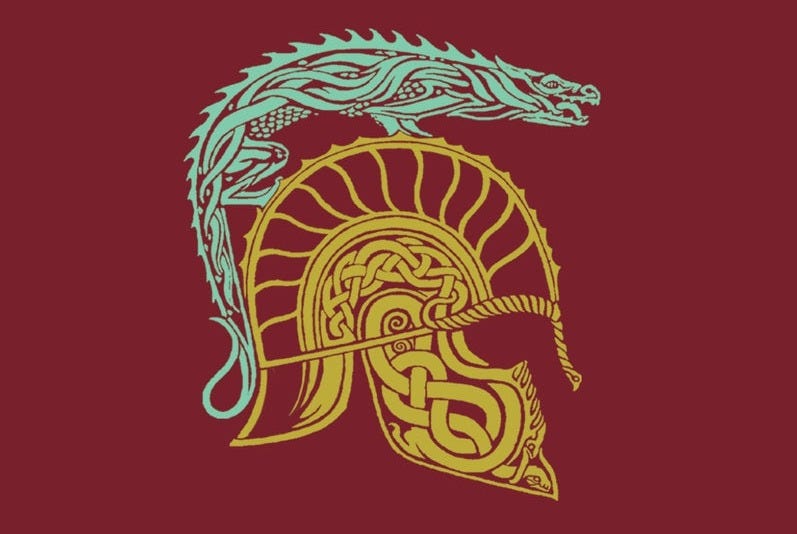

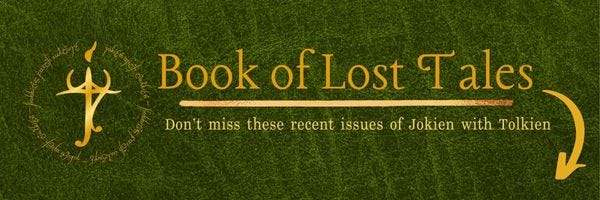
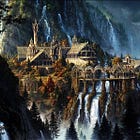
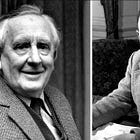

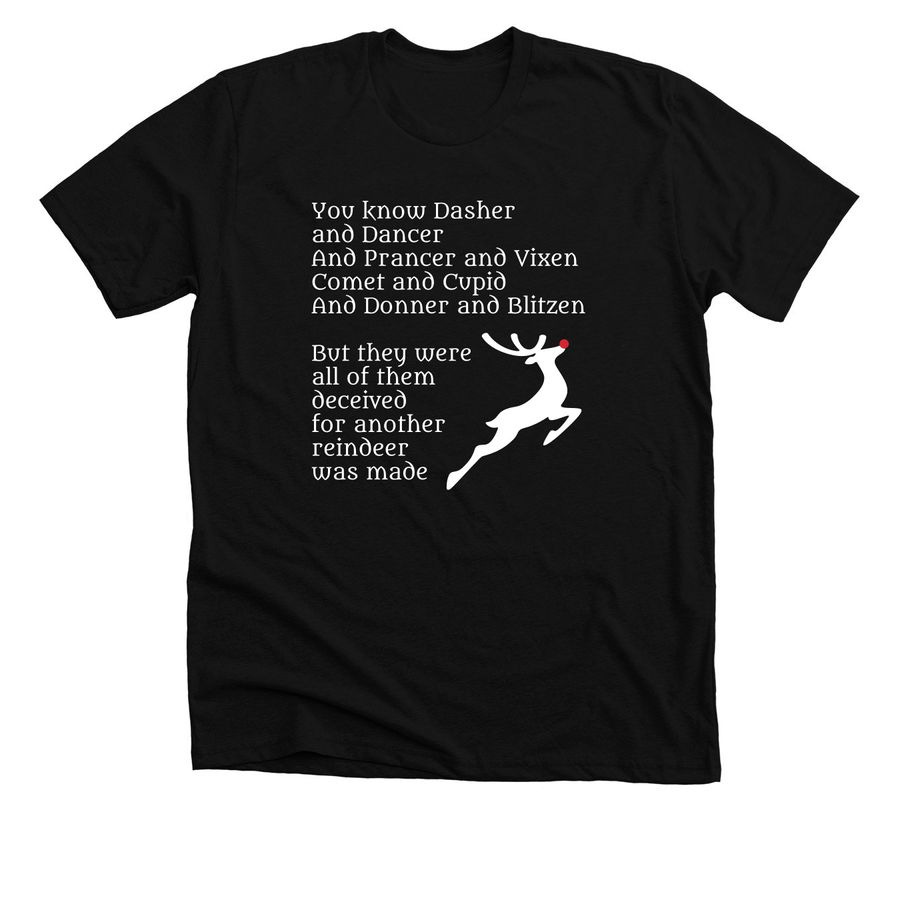

I recommend Soren Kierkegaard's Either / Or for understanding the irreconcilable differences between the "aesthetic" Greek worldview of tragedy, based on no ethics or free will and the "ethical" Christian worldview, based on justice and accountability, with a place for grace.
“Interstellar” is one recent movie that contains elements of tragedy. Not a real downfall but noble sacrifice.